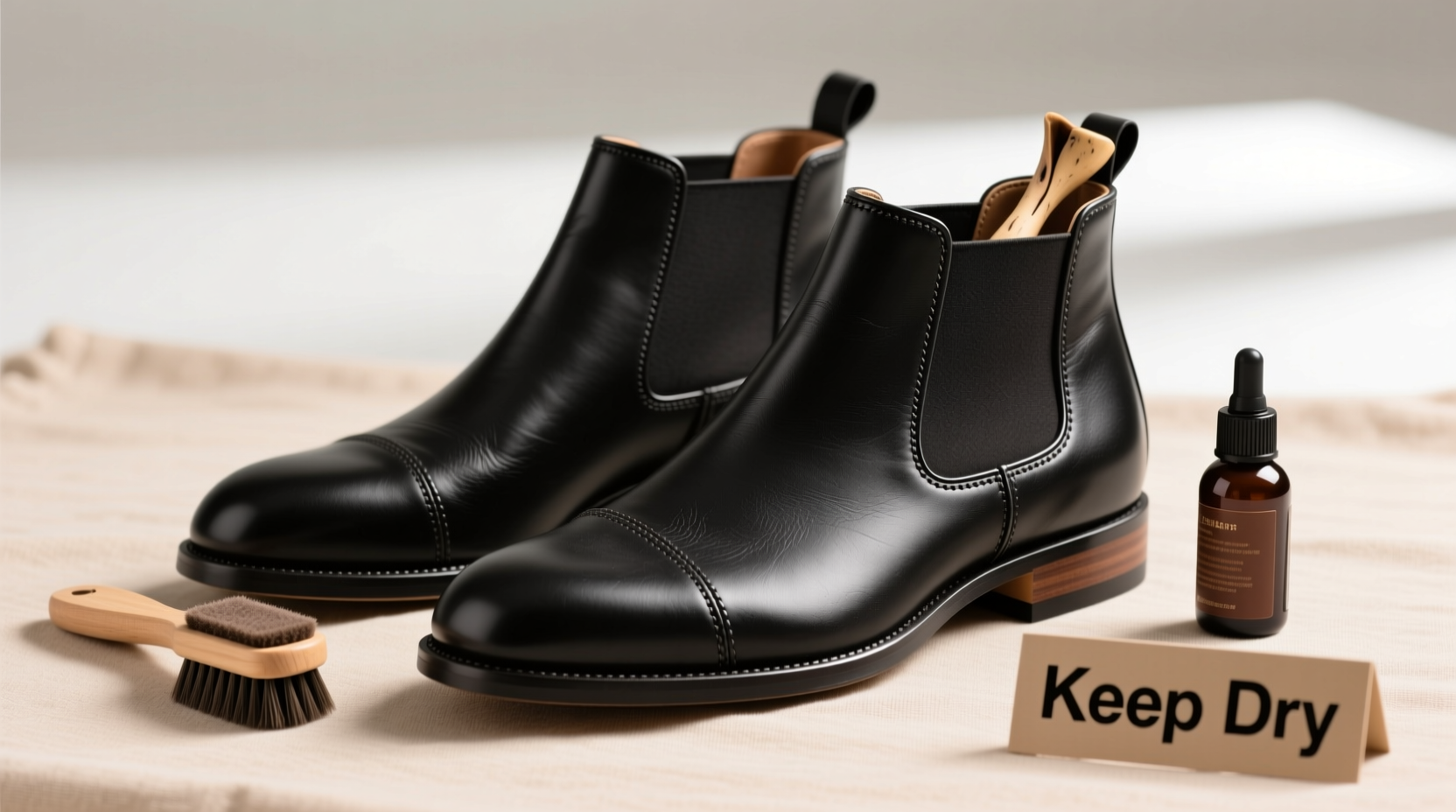Ankle booties are a staple in modern wardrobes, offering versatility, style, and seasonal adaptability. Yet, despite their popularity, many wearers overlook the importance of proper maintenance. Without consistent care, even high-quality booties can deteriorate quickly—losing shape, developing cracks, or absorbing odors. The good news is that with a few essential practices, you can significantly extend the life of your favorite pairs. From material-specific cleaning to smart storage solutions, these actionable steps ensure your ankle booties remain comfortable and stylish for multiple seasons.
Understand Your Bootie Material

The first step in effective maintenance is identifying the material of your ankle booties. Different materials require distinct care routines. Leather, suede, nubuck, synthetic fabrics, and textiles each react differently to moisture, heat, and cleaning agents. Misapplying products or techniques can do more harm than good.
- Leather: Durable and water-resistant when treated, but prone to drying and cracking if neglected.
- Suede & Nubuck: Soft and stylish but highly absorbent; vulnerable to stains and water damage.
- Synthetics: Often easier to clean but may degrade under heat or harsh chemicals.
- Textile blends: Breathable but susceptible to odor buildup and fraying at stress points.
Develop a Regular Cleaning Routine
Cleaning isn’t just about appearance—it prevents long-term damage caused by dirt, salt, and sweat. A consistent routine preserves texture, color, and structural integrity.
- Dry brushing: After each wear, use a soft-bristled brush (like a suede brush) to remove surface dust and debris.
- Spot cleaning: Address spills or scuffs immediately. Use a damp cloth for leather; avoid soaking.
- Deep cleaning: Perform every 4–6 weeks depending on usage. Use conditioners for leather; specialized foams for suede.
For leather booties, apply a pH-balanced cleaner followed by a conditioner to restore natural oils. Suede requires a rubber eraser or specialized cleaning block to lift stains without damaging fibers.
Do’s and Don’ts by Material
| Material | Do’s | Don’ts |
|---|---|---|
| Leather | Use leather cleaner & conditioner; wipe with damp cloth | Expose to direct heat; use household cleaners |
| Suede/Nubuck | Brush regularly; use protective sprays | Wet thoroughly; use water-based wipes |
| Synthetic | Wipe with mild soap solution; air dry | Machine wash; expose to high heat |
| Textile | Vacuum interior; deodorize with baking soda | Soak in water; scrub aggressively |
Protect Against Environmental Damage
Weather and daily exposure are leading causes of premature wear. Rain, snow, road salt, and UV rays all compromise materials over time. Proactive protection is key.
Apply a waterproofing spray suited to your bootie’s material. For leather, use silicone-free protectants; for suede, opt for fluoropolymer-based sprays that repel water without altering texture. Reapply every 4–6 weeks during heavy use.
Avoid wearing delicate materials like suede in prolonged wet conditions. If caught in rain, let them air dry naturally away from radiators. Stuff with acid-free tissue paper or shoe trees to maintain shape and absorb moisture.
“Waterproofing isn’t optional—it’s preventive maintenance. One season of neglect can undo years of wear.” — Marcus Lin, Footwear Restoration Specialist
Store With Care During Off-Seasons
Improper storage leads to warped shapes, mold growth, and material breakdown. When rotating out booties for warmer months, preparation is crucial.
Before storing, clean thoroughly and condition leather. Allow them to dry completely. Store in a cool, dry place with moderate humidity—ideally between 40–50%. Avoid basements and attics where temperature fluctuates.
- Use breathable cotton shoe bags to prevent dust accumulation.
- Insert shoe trees or rolled-up paper to support structure.
- Keep away from plastic bins that trap moisture.
- Rotate stored pairs occasionally to prevent permanent creasing.
Mini Case Study: Recovering Winter-Damaged Booties
Sophia wore her suede ankle booties throughout a harsh winter without protective spray. By March, they were stained, stiff, and showed salt marks along the soles. She took them to a cobbler who used a suede revitalizing kit—brushing deeply, applying a color restorer, and finishing with a fresh waterproof coat. Though restored, the process cost 60% of the original price. Had she applied protection monthly, she could have avoided both damage and expense.
Maintenance Checklist
- ☑ Brush off surface dirt and dust
- ☑ Inspect for loose stitching or sole wear
- ☑ Clean with appropriate product (leather/suede/synthetic)
- ☑ Condition leather to prevent cracking
- ☑ Reapply waterproofing spray
- ☑ Rotate wear to allow rest and recovery
- ☑ Store properly when not in use
Frequently Asked Questions
How often should I condition my leather ankle booties?
Condition every 4–6 weeks with regular use. In dry climates or during winter, increase to every 3 weeks. Over-conditioning can soften leather too much, so moderation is key.
Can I use the same cleaner for suede and nubuck?
No. While similar in appearance, nubuck has a finer nap and is more delicate. Always use a cleaner specifically labeled for nubuck to avoid fiber damage.
Why do my booties smell even after cleaning?
Odor usually comes from bacterial growth in the lining due to sweat. Sprinkle baking soda inside and let sit overnight, then vacuum. Use moisture-wicking insoles and rotate footwear to reduce sweat buildup.
Conclusion: Small Habits, Lasting Results
Maintaining ankle booties doesn’t require hours of effort—just consistency and attention to detail. By understanding your materials, cleaning regularly, protecting against the elements, and storing wisely, you preserve both comfort and aesthetics. These habits don’t just delay replacement costs; they honor the craftsmanship behind well-made footwear. Every brush stroke, spray, and careful placement in storage contributes to a longer, more sustainable wardrobe.









 浙公网安备
33010002000092号
浙公网安备
33010002000092号 浙B2-20120091-4
浙B2-20120091-4
Comments
No comments yet. Why don't you start the discussion?